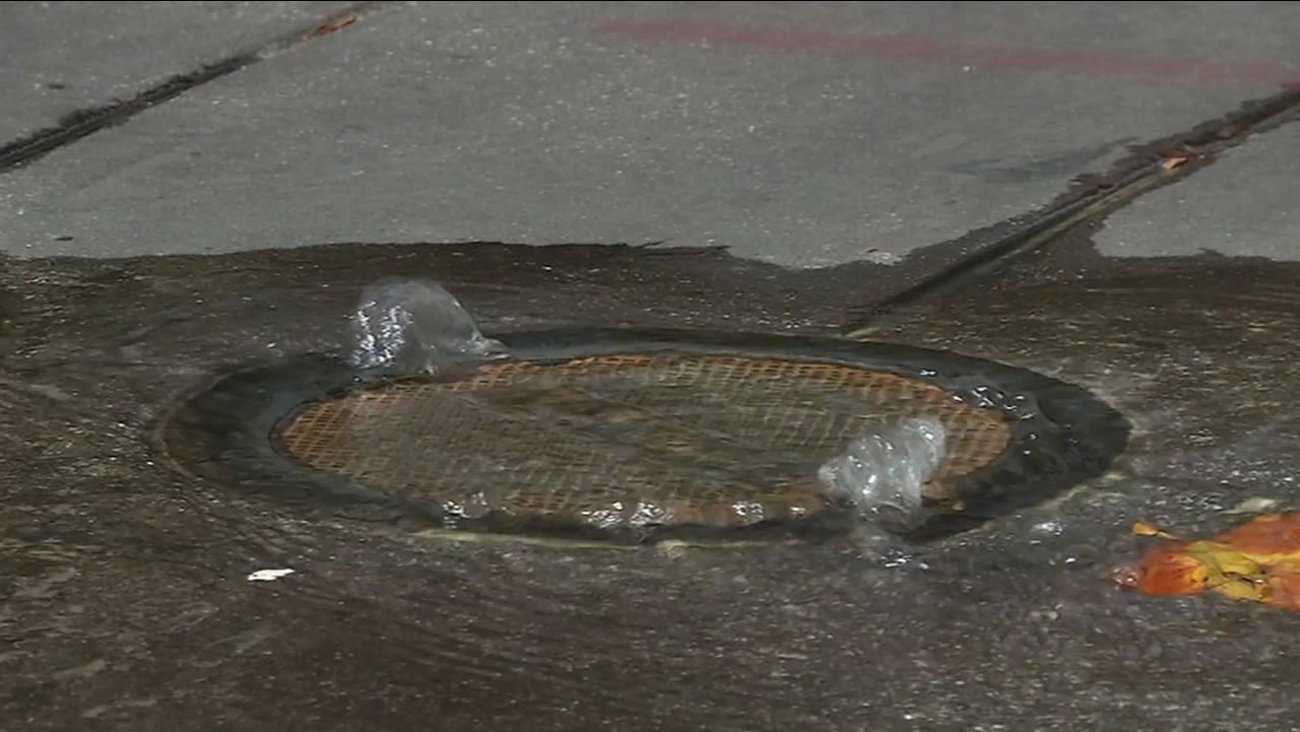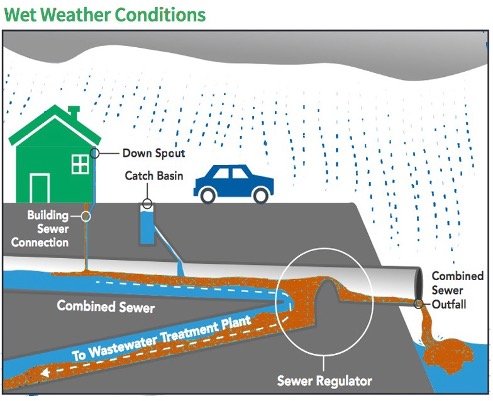How Green Roofs Prevent Sewer Overflow
Table of Contents Show
Why Is April Rain a Problem for NYC's Sewer System?
New Yorkers have made it through another long Winter. Spring is coming which means warmer days are ahead. But this also means rain and lots of it. Historical weather data shows April is the rainiest month in New York City with an average of 3.7 inches of rainfall. While less than four inches of rain might not seem like much, it does more harm than rain-check your outdoor plans.
What is a Combined Sewage System?
60% of New York has a combined sewer system. In short this means the same single pipe collects both rainwater and sewage from buildings. During normal, dry weather conditions, the sewage flows normally to the wastewater treatment plant for processing. And while there certainly are more toilets today than 150 years ago when NYC’s sewer system was designed, we still have just enough bandwidth to handle the load, but barely. However, during wet weather, combined sewers receive higher than normal flows of water which then mixes with the sewage. Treatment plants cannot handle this increased flow rate. So what’s the solution? (Hint: none of the options are good.) They can’t allow the system to back-up via toilets and flood people’s homes. Nor can they let the water rise up through the storm drains and flood our streets.
So…the excess is sent directly into New York City’s waterways via any one of 460 combined sewer overflow points. According to the NY Riverkeeper, “as little as one-twentieth of an inch of rain can overload the system.” This event is called a combined sewage overflow.
What Happens to NYC Waterways During a Combined Sewer Overflow?
Combined sewage overflows have a direct impact on our water quality and the recreational use of local waterways. Because of this, after rainstorms many parts of our waterfront and beaches are unsafe for recreational use. In addition to concerns on human health, these events impose environmental concerns and economic costs. “New York City has at least 460 CSO outfalls that discharge more than 27 billion gallons of raw sewage and polluted stormwater into the Hudson River and New York Harbor each year.”
This water mix full of bacteria, chemicals, and harmful toxins are a threat to our marine wildlife.
How Do Green Roofs Help Prevent Combined Sewer Overflow?
What Is Green Infrastructure and How Does It Reduce CSOs?
How do we fix our outdated sewage system? There are faster and much cheaper solutions than reconstructing an entire sewage system. The answer is green infrastructure. Greenstreets, rain gardens, bioswales, and green roofs are all types of green infrastructure, and they can decrease combined sewage overflows by thousands of gallons.
Green infrastructure sponges up and absorbs rainwater right where it lands, on our rooftops, sidewalks and other impervious areas. Much of the water is used by the vegetation and is evapotranspired into the air. The rest eventually trickles down to the sewers but this can take hours, even days. But by this time, the worst effects of the storm have passed and the treatment plant has already caught up. In this regard, green roofs help to ‘peak shave’ the worst effects of storms on local sewers. It’s also worth mentioning that stormwater gets filtered by the vegetation thereby sending pre-cleaned water down into the sewer, easing the demand on treatment plants.
What Financing Options Exist for Green Roofs?
New York City passed a Green Roof Tax Abatement Bill, providing an enhanced tax abatement of $15.00 per square foot offered for green roofs built on properties located within specifically designated New York City community districts. These priority districts were chosen based on communities located in the combined sewage overflow tributary areas.
About The Author
Alan Burchell is the Principal of Urbanstrong, an award-winning firm specializing in sustainable rooftop solutions. A professional engineer, LEED-AP, Fitwel Ambassador and certified Green Roof Professional, Alan holds a degree in mechanical engineering and a Master of Science in Sustainability Management from Columbia University, with a focus on Sustainable Water Management.
For over a decade, Alan has been at the forefront of designing and implementing Solar-Integrated Green Roofs to tackle advanced rooftop stormwater management challenges. His extensive experience spans all seven continents, where he has worked as an environmentalist, project manager, speaker, and sales engineer. This global perspective enables Alan to address critical energy and water management issues, helping building owners reduce costs while complying with local codes, enhance sustainability, and boost property values.
Contact Alan today at aburchell@urbanstrong.com or 215.480.2210 or book a 15min chat directly in his calendar here.






